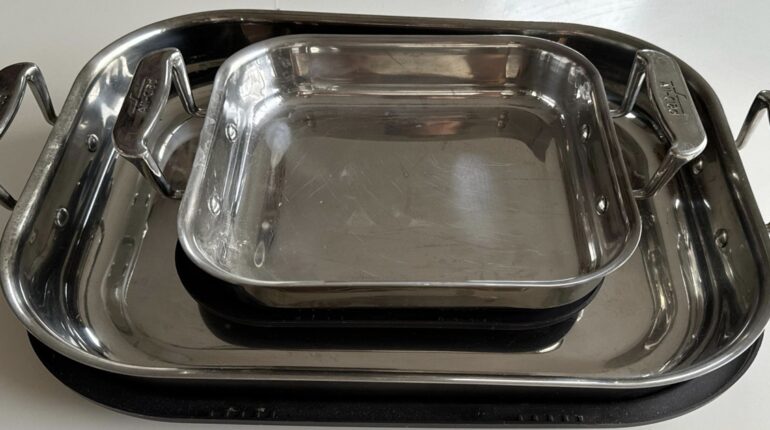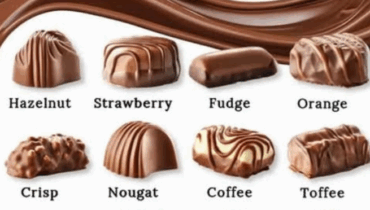📌 Choosing the Perfect Baking Pan: The Ultimate Guide for Better Bakes

Posted 5 August 2025 by: Admin
Ever wondered why your cookies burn on the edges or your banana bread won’t bake through? The secret often lies in the type of baking pan you choose. Unlock the keys to better baking by understanding what makes each pan unique!
source: Reddit
When I first began baking, I assumed all pans were pretty much the same. My kitchen had a single glass baking dish, a few dark metal trays, and a silicone muffin tin bought on impulse. But after burning brownies, ruining banana bread, and making cookies that could break teeth, I quickly realized: the pan you use—and the ingredients you choose—can make or break your recipe.
If you’ve dealt with cakes that refuse to bake or uneven brownies, your recipe may not be the culprit—the pan might be. Here’s what I’ve learned through lots of trial and error, and how you can apply these lessons for perfect results every time.
Why Pan Material Matters
Different pan materials distribute and retain heat in their own ways. Some get hot fast and brown the edges, while others heat up more slowly, holding warmth for longer. This makes a big difference in baking—your lasagna pan shouldn’t be the same one you use for cookies or angel food cake!
source: Pixabay
Glass Baking Pans: Even Heat, But Be Careful with Sweets
Glass pans are my top pick for casseroles and baked pasta dishes because they hold and distribute heat so evenly. They’re perfect for recipes that require a long, steady bake. However, glass keeps cooking your food even after leaving the oven. For desserts with sugar, like brownies or cobblers, I lower the oven temperature by 25°F to prevent over-browning.
Best for: Lasagna, baked mac and cheese, bread pudding
Tip: Lower the baking temp for sweets to avoid burning.
Ceramic: Attractive and Reliable
Ceramic bakeware is my go-to when I want something that bakes evenly and looks great on the table. Like glass, ceramic distributes heat well and retains it, which is ideal for serving hot dishes straight from the oven.
What I’ve learned: Ceramic is perfect for things you want to serve right away, like enchiladas or baked French toast.
Best for: Casseroles, cobblers, gratins
Tip: It heats up slowly and keeps cooking food even out of the oven.
Silicone: Flexible, Nonstick, But Not for Every Recipe
Silicone bakeware delivers on its nonstick promise—muffins pop out easily, and cleanup is effortless. However, silicone doesn’t conduct heat well, leading to longer bake times and less browning. I mainly use it for muffins and cupcakes, which benefit from a moist finish.
Best for: Muffins, cupcakes, mini cakes
Tip: Always place silicone pans on a solid metal baking sheet for support and to prevent spills.
source: Pixabay
Metal Pans: The Baker’s Workhorse
Metal pans, especially aluminum, are my everyday choice. They heat quickly and evenly—ideal for cookies and cakes. Steel is sturdier but takes longer to heat. Dark-colored metal absorbs more heat and can brown bottoms faster, so I line these with parchment when baking sensitive recipes. Insulated pans help slow the bake, producing softer cookies.
Best for: Cookies, cakes, quick breads, sheet pan meals
Tip: Monitor bake time closely—especially for dark metal pans.
Pairing the Pan with the Recipe
Let’s get practical. Here’s my favorite pan for each bake:
Brownies: Light metal or ceramic pans for even baking—glass overheats edges before the center sets.
Cakes: Aluminum pans bake evenly and rise well.
Muffins: Silicone molds—no liners needed and super easy to clean.
Roasted veggies: A heavy-duty metal sheet for the best caramelization.
Lasagna: Ceramic—holds heat, looks nice, and delivers a uniform bake.
Bread pudding or baked oatmeal: Glass or ceramic for gentle, even heating.
Caring for Your Pans
A few key lessons I’ve learned about pan maintenance:
Don’t bake acidic foods in plain aluminum—use anodized or lined pans to avoid metallic taste.
For sticky recipes, use parchment—especially with metal.
Cheap pans may warp, causing uneven results.
Replace scratched nonstick pans to avoid flaking and compromised bakes.
Always stabilize silicone molds with a metal tray.
source: Pixabay
No “One-Pan-Fits-All” Solution
After years of baking, I’ve learned the value of a small, quality collection of pans, each with a purpose. If you’re starting out, invest in an aluminum cake pan, a ceramic casserole dish, and a silicone muffin tin. The right pan can transform your recipes—think chewy cookies, golden cornbread, and bubbling baked ziti. Your best bakes are just a pan away!




















